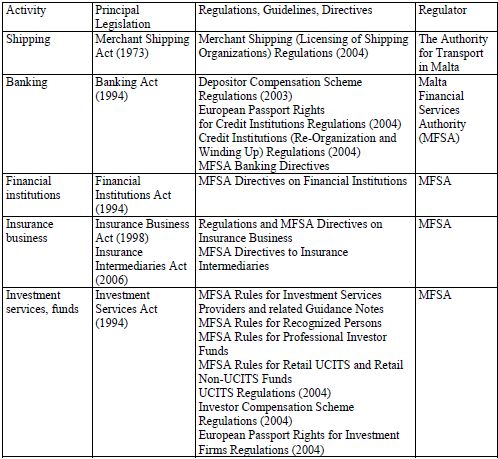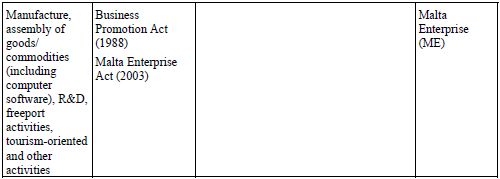Introduction
In General
Prominently located between Southern Europe and North Africa, the Maltese Islands, comprising Malta, Gozo, and Comino, occupy a total area of 122 square miles. Situated at a distance of 50 miles from Sicily and 190 miles from Tunis, Malta is only one hour's flying time from Libya, one and a half hours from Rome, and three hours from London, Amsterdam, and Paris. The proximity of Malta to these different economic and political centers increases its potential as aplaque tournante for the carrying on of international business. Malta is one hour ahead of GMT and six hours ahead of EST.
In July 2011, Malta had a total population of 425,384. Constantly exposed to different cultural influences, the Maltese have developed an instinctive flair for foreign languages. Besides English and Maltese, which are spoken fluently by virtually all the population, it is not at all uncommon to have dealings with professionals, businessmen, and clerical staff also speaking Italian and French. The study of Arabic is constantly increasing, and the University of Malta has launched a specialized course leading to a diploma in business Arabic.
A more recent introduction is that of a Certificate Course in Arabic for Business and Communication. All laws and official communications are issued in English and Maltese, and most commercial and banking documents are drawn up in English.
Malta has one international airport in Luqa, which regularly operates direct flights to nearly all the major destinations in Europe and the Mediterranean basin. Malta International Airport is increasingly popular as a stopover destination for flights coming in from North Africa and the Middle East.
The biggest port is the Grand Harbor, a natural harbor that is found in the northeastern part of the island, overlooking Sicily. The Grand Harbor is the major hub for shipping services, ranging from ship repairing and shipbuilding to dry-docking facilities. Moreover, the Malta Freeport was constructed in the late 1980s to cater to container ships in transit. Extensive conventional and roll- on/roll-off services by international shipping lines, among them the national shipping company Sea Malta, carry freight and cargo from Malta directly to Mediterranean, Northern European, Middle Eastern, and Asian ports. All factories are located within 20 minutes of a harbor or an airport.
Malta became an independent country within the British Commonwealth in 1964 and became a republic in 1974. Malta became a full member of the European Union (EU) on 1 May 2004.
Malta joined the eurozone on 1 January 2008 and adopted the euro as its currency. This facilitates commercial transactions between the Island and other EU countries. Malta's major commercial activities are related to tourism, industry, agriculture, and services (maritime, financial, and others).
Legal System
The Maltese legal system is a hybrid system containing elements of both the Continental Code Napoleon system as well as certain principles of English law. Maltese legislation is codified, and the supremacy of the Constitution prevails. The Maltese Civil Code is based on the Code Napoleon, while the Criminal Code draws heavily on the then Code of the two Sicilies.
English legal principles are very influential in public law and in commercial law, especially in shipping and company law. An important appeal court decision states that when the Maltese legal system is silent on public law matters, English public law principles should apply.
However, the system of judicial precedent does not apply: judges are not bound by previous case law, though much weight is attached to these decisions. Malta also has aligned its laws with the applicable rules of the EU in view of its accession to the EU on 1 May 2004.
Legislative Structure
In 1988, a major step forward was taken through the introduction of specialized legislation, which curtailed many of the rather restrictive financial and regulatory rules that applied to non-residents wishing to do business in and through Malta. This was the Malta International Business Activities Act, coupled with the Offshore Trusts Act, and it had a reasonable level of success. It was constructed on an onshore/offshore divide between residents and non-residents.
There was a major policy shift in 1994. Malta had applied for EU membership in April 1992, and in 1994 an array of legislation was introduced with the two key purposes: upgrading the standard of Maltese regulatory rules and structures to EU standards and removing the onshore/offshore divide.
In 1994 and 1995, 15 pieces of major legislation were enacted by unanimous vote of the Maltese Parliament. These laws articulated the detail of a modern regulatory structure based on EU models, marking a shift from the catchall rules which existed previously. The 1994 legislative initiatives had the object of launching Malta as a financial center, rather than as an offshore center as it was previously known.
In the early 1990s, a capital market was set up with the establishment of the Malta Stock Exchange (MSE). A fully functioning money market was established in 1995.
From September 1998 to December 2002, Malta was involved in accession negotiations with the European Commission. During this time, Malta's legislative framework, including its financial services legislation, was 'screened' and brought in line with EU law. Malta became a full member of the EU on 1 May 2004. Malta also has an extensive network of international double-taxation treaties that may provide competitive tax advantages to investors.
Legislation is sector-specific, with the Civil Code,1 the Commercial Code,2 and the Companies Act3 providing the underlying legal structure. Table 1 gives some of the various pieces of legislation which regulate each specific business sector.
Table 1: Sector-Specific Legislation



The enactment of these laws is complemented by other specialized pieces of legislation addressing certain legal matters that either apply across the board to all sectors or to most of them, such as prevention of money laundering,4 data protection,5 electronic commerce transactions,6 prohibition of abuse of dominant position and concerted practices,7 protection of intellectual property rights,8 and employment and industrial relations.9 These legislative enactments are fully in line with the EU directives and regulations relating to each area.
To continue reading this article, please click here
Footnotes
1 Chapter 16 of the Laws of Malta.
2 Chapter 13 of the Laws of Malta.
3 Chapter 386 of the Laws of Malta.
4 Prevention of Money Laundering Act 1994 (Chapter 373 of the Laws of Malta).
5 Data Protection Act 2001 (Chapter 440 of the Laws of Malta).
6 Electronic Commerce Act of 2001 (Chapter 426 of the Laws of Malta).
7 Competition Act 1994 (Chapter 379 of the Laws of Malta).
8 Copyright Act 2000 (Chapter 415 of the Laws of Malta); Trade Marks Act 2000 (Chapter 416 of the Laws of Malta); Patent and Designs Act 2000 (Chapter 417 of the Laws of Malta).
9 Employment and Industrial Relations Act 2002 (Chapter 452 of the Laws of Malta).
Previously published by Juris Publishing
The content of this article is intended to provide a general guide to the subject matter. Specialist advice should be sought about your specific circumstances.


